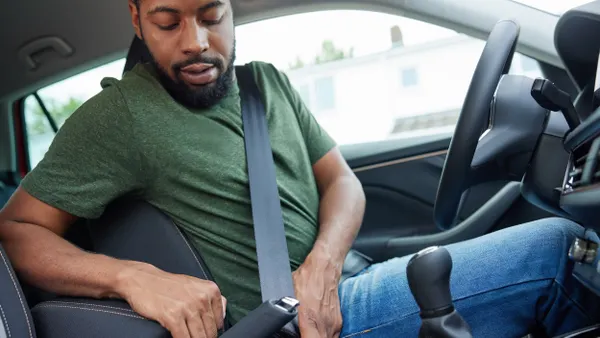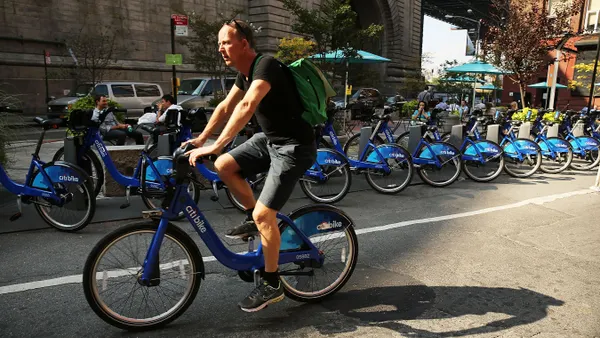Dive Brief:
- Startup Firefly has launched with $21.5 million in seed funding to provide mountable digital smart screens for ride-hailing vehicles in order to display ads. The screens will provide an opportunity for participating ride-hailing drivers to make extra income.
- The screens will display remotely programmable, geofenced advertisements for national and regional brands, small businesses and charities. A minimum of 10% of the ads will be reserved for local non-profits, public sector messaging and other non-commercial groups, such as charities and community groups. An additional 10% of unsold screen time will go toward non-chain small businesses.
- The screens also will provide local governments with data, such as clean air and mobility conditions.
Dive Insight:
The tops of taxis have displayed advertising for years, making it just a matter of time before the practice caught on in the ride-hailing space. But unlike most taxis' static displays, Firefly's digital screens will be able to easily rotate messages and provide more targeted messaging. For example, the GPS-based system can provide certain ads only within a geofenced area and then rotate once the vehicle moves into a new area. Firefly already has performed beta testing on this style of advertising during a trial in the Los Angeles area.
Firefly's digital advertising comes at an opportune time when taking into account the current attention to ride-hailing drivers' incomes. With ride-hailing companies having tweaked their algorithms for driver payment a few times since launching and also a glut of such drivers on the road, claims abound of drivers not making a living wage. Just this week New York City became the first to set a minimum wage for ride-hailing drivers. Firefly claims the average driver using its service makes an extra $300 per month.
The digital ads are the latest in-vehicle or on-vehicle way to help ride-hailing drivers make more money, and there will likely be plenty of others. Earlier this year, Uber partnered with Cargo to put boxes of products — such as gum, beverages and snacks — in ride-hailing vehicles to let drivers make money off of passengers' in-vehicle purchases.
Incorporating the minimum requirement for local and non-commercial ads is a strong move that likely will prompt Firefly to gain favor with municipal leaders. Similarly, voluntarily offering up data is positive, considering more and more cities are hungry for additional data collection. Receiving the information can give cities a better idea of what occurs at the street level and which areas could benefit from physical improvements or policy changes.










